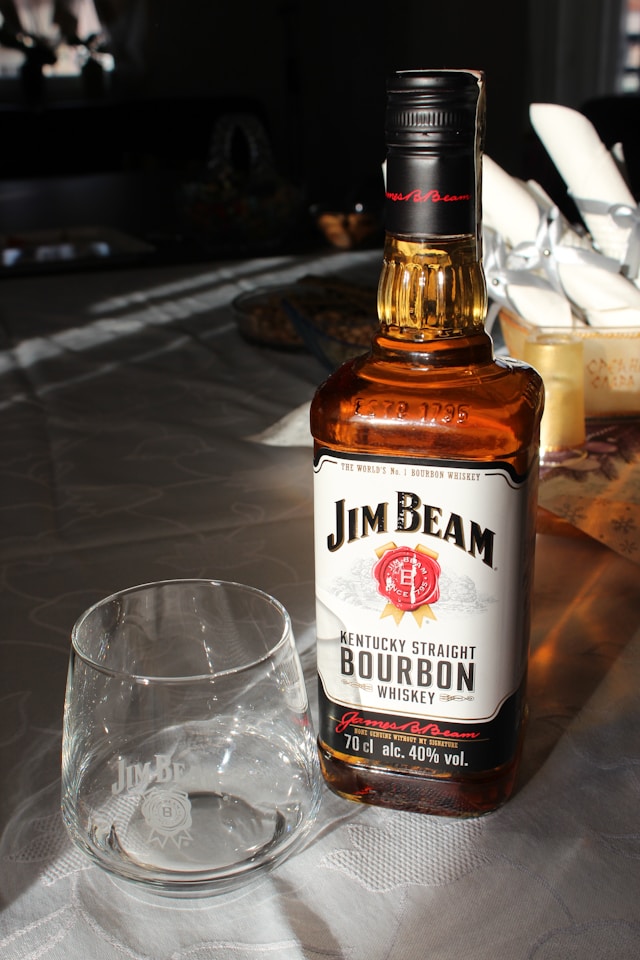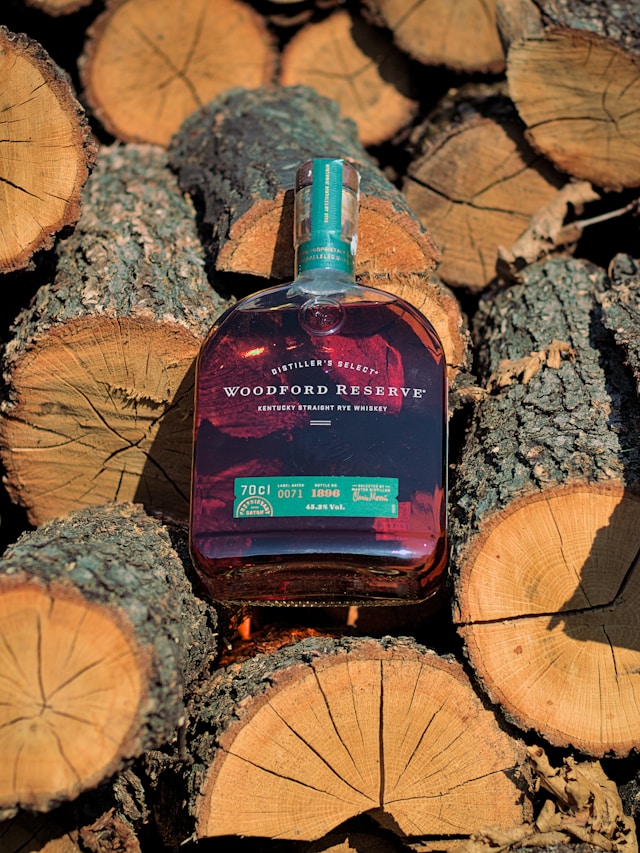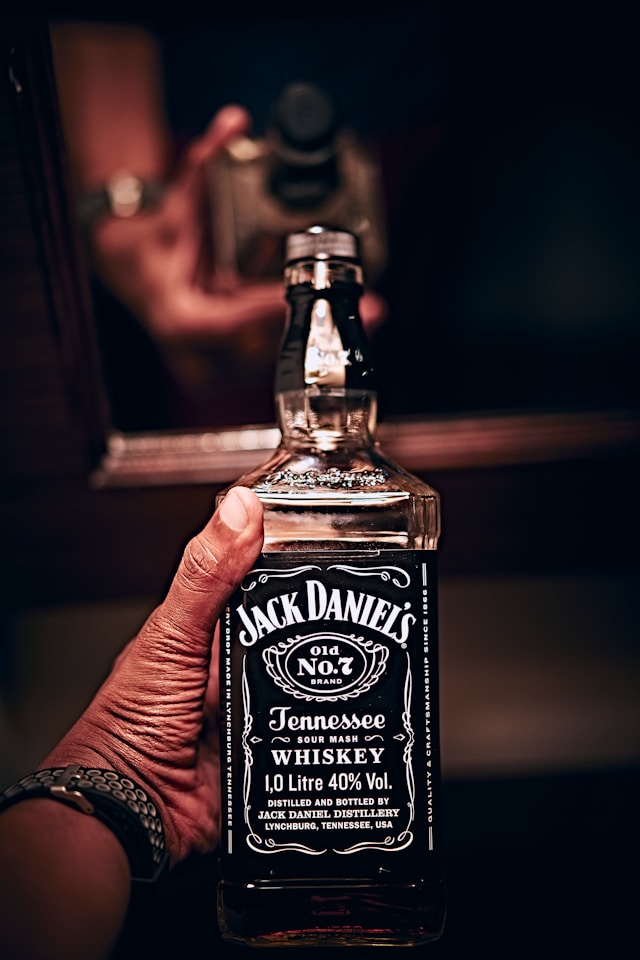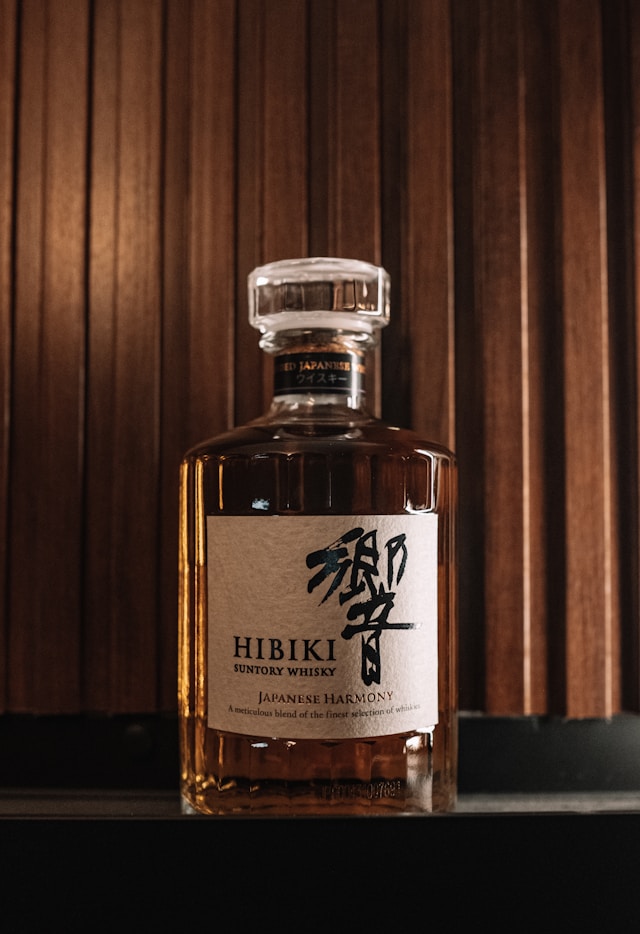Did you know that most American whiskeys must rest in new charred oak barrels for two years to be called “straight” bourbon? From the traditional American bourbon, made with at least 51% corn, to the smooth Irish whiskey, the types of whiskey offer a wide range of flavors and histories.
Each whiskey type follows strict laws that contribute to its unique story. For example, the Bottled in Bond Act requires American whiskey to age for four years and bottles at 100 proof. In Canada, spirits must age for three years before people can enjoy them, while Japanese makers blend tradition with science to create unique flavors.
Whether you’re exploring charred whiskey or seeking guidance, there’s a lot to discover. The choices are endless, from the deep smoky taste of single malt Scotch to the spicy rye whiskey. This guide opens the door to the worlds of Scotch, Irish, Rye, Japanese, and more, highlighting their unique traits and craftsmanship. Join us as we explore the spirits that shape cultures and delight drinkers.
Understanding Whiskey: Varieties, Labels, and Regional Distinctions
The world of whiskey is complex and diverse, offering something for everyone. From Scotland’s rugged Highlands to Ireland’s green hills, whiskey’s craftsmanship and unique character capture global attention. The spelling of “whiskey” or “whisky” hints at its origin—’whiskey’ in Ireland and the U.S., and ‘whisky’ in Scotland, Canada, and Japan. This distilled spirit is from grains like corn, rye, barley, and wheat and gains its distinctive flavor from aging in wooden casks.
Labels play a crucial role in identifying whiskey varieties and understanding the rules that define them. For instance, Scotch whisky must age in oak for at least three years, while American bourbon requires at least 51% corn and aging in new charred oak barrels. Different countries have regulations that influence whiskey’s flavor and character, such as Canada’s three-year aging requirement and Ireland’s stipulation that whiskey must age for at least three years in wooden casks.
Whiskey also comes in various forms, such as single malts, blends, and barrel-proof options. Single malt whiskey, made in a single distillery, showcases its unique style, while blended whiskies combine different whiskeys for a balanced taste. Understanding the labels, terms, and rules enhances the whiskey experience, allowing enthusiasts to appreciate the traditions and craftsmanship behind each sip, whether it’s a smooth Canadian whisky or a peaty Scotch.
1. The Rich Heritage and Craft of Irish Whiskey
Irish whiskey is more than just a drink; it’s a piece of Ireland’s history and culture. Thanks to the traditional malt mash process, it achieves a smooth taste. Aging for at least three years, it develops a rich and complex flavor that people love worldwide.
Irish whiskey has a long history, starting in the early 1400s. It’s older than Scottish whiskey by over 170 years. The Old Bushmills Distillery in Northern Ireland, licensed in 1608, is the oldest whiskey producer still running today.
The unique taste of Irish whiskey comes from old laws requiring it to use both malted and unmalted barley. This mix gives it a smooth, fruity smell and a rich feel.
In the 20th century, Irish whiskey almost disappeared due to tough times. But now, it’s back and stronger than ever. The Great Irish Whiskey Renaissance names this comeback. Thanks to brands like The Craft Irish Whiskey Co., there is more demand for new, high-end whiskeys.
Today, Irish whiskey is great for drinking on its own or in cocktails. Its comeback has brought back old distilleries and started new ones. It combines new ideas with old traditions.
The triple distillation process makes Irish whiskey unique. It gives it a purer and smoother taste. This method and careful craftsmanship show the link between old and new in Irish whiskey-making.
Irish whiskey wins over fans, from the historic Old Bushmills Distillery to new brands like The Craft Irish Whiskey Co. It’s a symbol of top-notch drinks and Irish pride. Irish whiskey’s story, from its past to its current success, shows a spirit that’s strong, flexible, and truly Irish.
2. The Peaty Allure of Scotch Whisky
Scotch whisky is a blend of tradition and skill, with peated whisky known for its smoky taste, reflecting Scotland’s landscapes. Made in regions like Islay and the Islands, this whisky uses malt dried over peat fires, giving it its distinct earthy, smoky flavor.
In contrast, malt whisky from Speyside and the Highlands often features floral and fruity notes, with some distilleries adding a hint of peatiness for complexity. This variety highlights how malted barley can produce different flavors based on location and production methods.
Every peated whisky tells a story of its place. The smoky taste is more than just flavor; it’s a nod to Scotland’s moors. Islay’s distilleries, like Bruichladdich, are must-visits for those who love this taste. They offer whiskies that are both bold and rewarding.
Scotch whisky makers must produce the spirit in Scotland and age it in oak casks for at least three years, including peated varieties. The preparation of the malt in peated whisky gives it a distinctive taste and deep-rooted tradition.
Peated Scotch whisky symbolizes smoky flavor and tradition in Scotch making, making it a favorite for those seeking depth in their whisky.

3. Bourbon Whiskey: America’s Native Spirit
Bourbon whiskey was named “America’s Native Spirit” by Congress in 1964. It’s a special spirit made mainly in Kentucky. It comes from a corn mash, and it has a long history and strict rules that make it unique.
Origins and Legal Standards of Bourbon
Scottish and Irish immigrants brought bourbon-making to America. They settled in Kentucky, where the water was perfect for making smooth bourbon. Over time, bourbon became a regulated industry with strict rules to keep its quality high.
To be called bourbon, the whiskey must contain at least 51% corn and age in new, charred oak barrels. Distillers can’t make it stronger than 160 proof during distillation. It must enter barrels for aging at 125 proof or less and bottles at 80 proof or higher.
Tasting Notes: Decoding Bourbon’s Flavor
Bourbon is known for its rich and complex taste. Because of its high corn content, it’s sweeter and more oily. When you sip it, you’ll taste vanilla, oak, caramel, and spice.
There are also fruity and floral notes from the other grains like rye or wheat. The charred oak barrels add caramel and smoke flavors, making the bourbon even more special.
The careful aging process and the lack of additives set bourbon apart. This makes it a key part of American whiskey culture and a global icon.

4. Rye Whiskey: America’s Comeback Kid
Rye whiskey is back in a big way in American history. It’s famous for its spicier taste compared to bourbon. This spirit is gaining fans among both experts and casual drinkers for its bold flavor.
To become an American rye, it must contain at least 51% rye. Corn and malted barley make up the rest. This mix gives rye its sharp and deep taste, setting it apart from other whiskeys. After aging for two years, distillers label it straight rye whiskey to indicate its quality and age.
Rye whiskey was a top choice for cocktails before Prohibition. It was key in drinks like the Manhattan and the Old Fashioned. But Prohibition hit rye distilleries hard, and many couldn’t come back after it ended.
Yet, the late 1990s saw a new interest in rye, thanks to creative bartenders and distillers. Brands like Jim Beam and Wild Turkey kept rye alive, even when it was less popular. Their efforts helped rye whiskey come back strong in the market.
Today, rye whiskey’s comeback is about more than just old traditions. It’s also about new ideas in the rye world. Distillers like Fritz Maytag are trying new things, like using 100% malted rye grain. These whiskeys, aged in new charred oak barrels, offer complex tastes like butterscotch and peppermint.
5. Canadian Whisky: A Blend of Smoothness and Tradition
Canadian whisky is a top choice worldwide, known for its subtle complexity and long tradition of quality. It’s famous for its high corn content and smooth taste. This makes it versatile and easy to enjoy. The careful aging in barrels and blending make each bottle a true showcase of Canadian skill.
The Legal Requirements of Canadian Whisky
In Canada, making whisky means it must age in small wood barrels for at least three years. This makes the whisky smooth and gives it a unique taste. Also, it must be at least 40% alcohol by volume. This rule ensures the whisky is strong enough for cocktails or drinking on its own.
The Art of Blending in Canadian Whisky
Blending Canadian whisky is a craft that shows off the skill and history of its makers. These whiskies blend different grains like corn, rye, wheat, and barley. This mix creates a smooth whisky that’s both rich and easy to drink. It offers a wide range of flavors that everyone can enjoy.
Thanks to its high corn content, Canadian whisky offers a wide range of tastes. It’s perfect for making cocktails or just enjoying by itself. Canadian whisky keeps its reputation for being smooth and full of flavor, loved by experts and casual drinkers alike.

6. Tennessee Whiskey: Charcoal Mellowing Magic
Tennessee whiskey’s tradition is unique among American whiskeys. This is thanks to the special Lincoln County Process, which includes a key step of charcoal filtration before aging. This makes the whiskey smooth and mellow. Making it only in Tennessee shapes its taste and deepens its cultural roots.
Tennessee whiskey is different from bourbon or rye. Its unique taste comes from its special filtration method, which uses double charcoal to mellow the whiskey, making it smooth, golden, and aromatic.
Distilleries like Tennessee Distilling pay close attention to every detail. This ensures their whiskey is always top quality. Their hard work shows their love for this craft and their commitment to a long-standing tradition.
Enjoying a glass of Tennessee whiskey is more than just drinking. It’s diving into a deep tradition of the American South. Every sip tells a story of skill and pride.

7. Japanese Whisky: The Rising Sun of Distillation
Japanese whisky is famous for its careful making and deep connection to tradition and new ideas. It has a unique identity shaped by Scottish methods but adapted to Japan’s conditions. Japanese whiskies are winning awards worldwide and capturing the hearts of many. It’s important to understand this fine spirit.
Influences and Techniques in Japanese Whisky
The history of Japanese whisky comes from Scotland, thanks to pioneers like Masataka Taketsuru. He learned in Scotland in the early 1900s. Yamazaki opened the first distillery in 1923. Since then, Japanese whisky has built a reputation for its quality by adhering to strict rules that maintain its authenticity.
These rules include the making, distilling, and aging of whiskies in Japan. They use local ingredients like malted grain and Japanese water. Key factors that influence these unique flavors include:
- Mizunara Oak Casks: These casks give Japanese whisky a unique taste of sandalwood and spice.
- Variable Cask Usage: Using American oak and sherry casks makes the whisky more complex.
- Climate Influence: Japan’s seasons help the whisky mature faster, giving it a unique taste.
Japanese Innovations in Whisky Production
Innovation is key to the future of Japanese whisky. Distilleries like Chichibu and Akkeshi experiment with new ways to make their whisky. They work hard to improve their blends and single malts.
- Blended Japanese Whisky: Whiskies like Hibiki Harmony and Nikka Days are smooth and well-balanced, and people love them both at home and abroad.
- International Recognition: Awards from around the world show Japanese whiskies’ quality and unique taste.
- Emerging Distilleries: New distilleries like Chichibu are getting praise, bringing more interest and investment to Japanese whisky.
Japanese whisky’s journey combines tradition and innovation, making it exciting. As interest in its unique whiskies and what new things might come from Japan grows, so does the demand for them.
Exceptional Varieties: Blended and Single Malt Whiskeys
The world of whiskey is full of amazing flavors and techniques. Blended whiskey and single malt whiskey are key parts of this rich landscape. They show a wide range of whiskey making and tasting.
Single malt whiskey is famous for its unique production. A distillery makes it from malted barley. This method shows off the distillery’s unique taste. The age on the bottle tells you how old the youngest whiskey in the bottle is.
Single malts are famous for their complex tastes. These can change a lot based on where the distillery is, the water it uses, how it distills, and how it ages the whiskey in barrels.
Blended whiskey makes up most of the whiskey market, especially in Scotch. It’s a mix of different malt and grain whiskies from various distilleries. Master blenders blend these to make a consistent flavor that many people like. Blended whiskey is affordable and great for sipping or mixing with other drinks.
Here’s how these two styles compare in practice:
| Whiskey Type | Composition | Typical Uses | Market Share |
|---|---|---|---|
| Single Malt | Made only from malted barley at a single distillery | Sipping, high-end cocktails | Smaller, but growing as connoisseurs increase |
| Blended Whiskey | Mix of malt and grain whiskies from multiple distilleries | Versatile, used in a range of mixed drinks | Over 90% of scotch whisky sales globally |
Both whiskey types are important in the global spirits market. They meet different tastes and occasions, making each one vital to the whiskey industry.
Types of Whiskey: A Spectrum of Flavor Profiles
The world of whiskey is rich and varied. Distillation grains, aging periods, and whiskey textures and flavor profiles shape it. From the smoky peat of Scotch to the sweet bourbon, each whiskey tells a story of tradition and skill.
Whiskey types use different grains, which affect their taste. Bourbon tastes sweet because distillers make it with at least 51% corn. Scotch gets its smoky taste from malted barley, especially when used with peat.
Rye whiskey has a spicier and more robust flavor because distillers use rye in its production. Tennessee whiskey is similar to bourbon but gets a unique smoothness from filtering through sugar-maple charcoal.
Indian whiskeys are gaining popularity for their unique tastes. These come from India’s hot and humid climate, which affects distillation and aging.
Irish whiskey earns its reputation for a smooth texture. This comes from being triple-distilled and aged for at least three years. It tastes rich and mellow, with notes of vanilla and honey.
The aging period is key in whiskey making. Longer aging in barrels adds complexity and depth to the flavor. Scotch and Irish whiskeys get their unique tastes from being in oak barrels for a long time.
There’s a growing number of craft distilleries now. They’re bringing new ideas to whiskey making, using different grains and techniques, and experimenting with aging.
Knowing about distillation grains, aging periods, and whiskey textures helps us appreciate and choose better. It shows the wide range of whiskey flavor profiles out there for us to enjoy.
Embark on a Flavorful Voyage With Scotland Whiskey
Exploring whiskey is like sailing through a sea of flavors. It offers a rich tapestry of flavors, histories, and craftsmanship that cater to diverse tastes and preferences. From the smoky depth of Scotch to the spicy bite of rye and the smooth elegance of Irish and Japanese whiskies, each type tells a unique story rooted in tradition and enhanced by innovation.
As you sip and savor, you’ll discover that whiskey is not just a drink but a journey through time, geography, and craftsmanship.
Are you eager to continue your whiskey journey? Our site is full of engaging content that delves into the nuances of Scotland’s best whiskies, including detailed guides, tasting tips, and behind-the-scenes looks at iconic distilleries. Whether you’re interested in learning more about specific whiskey styles or discovering new favorites, Scotland Whiskey has you covered. Click here to explore more and enrich your whiskey experience!